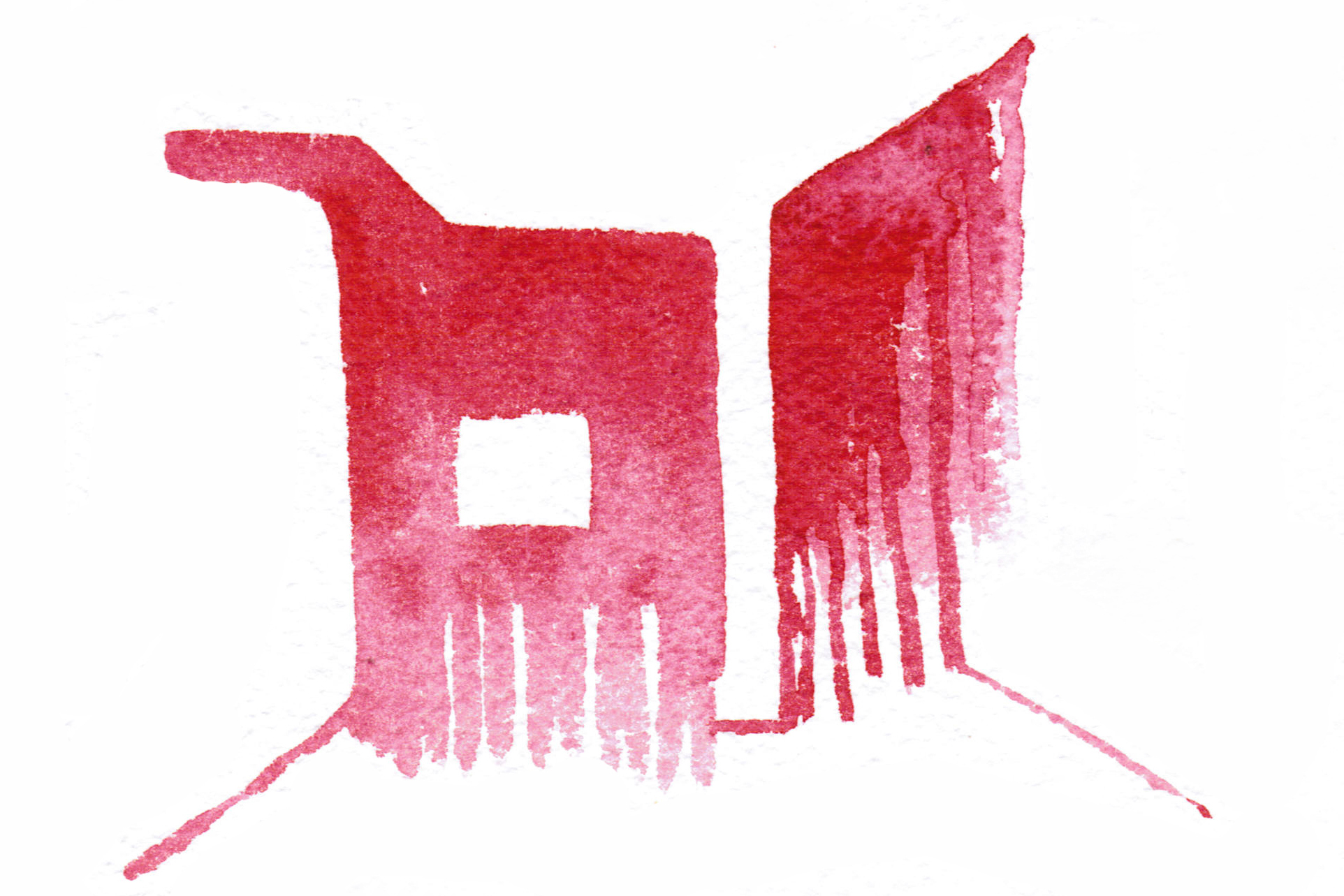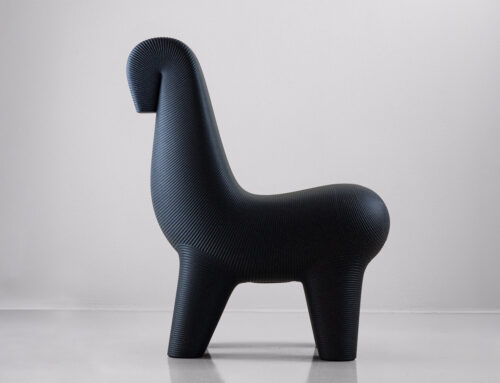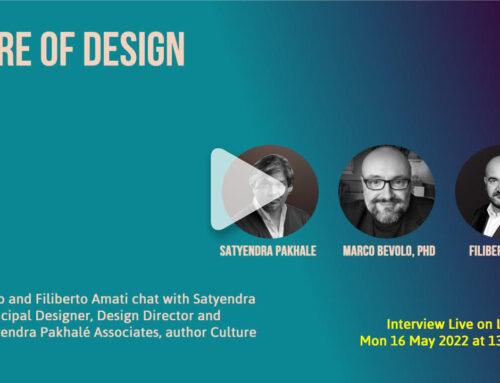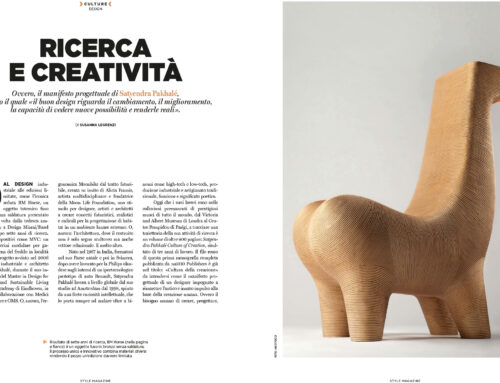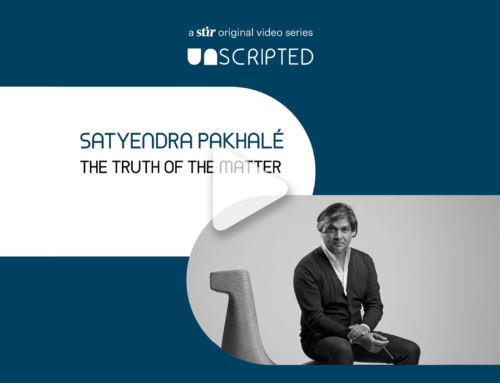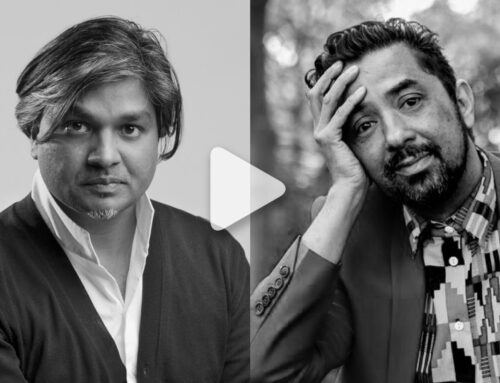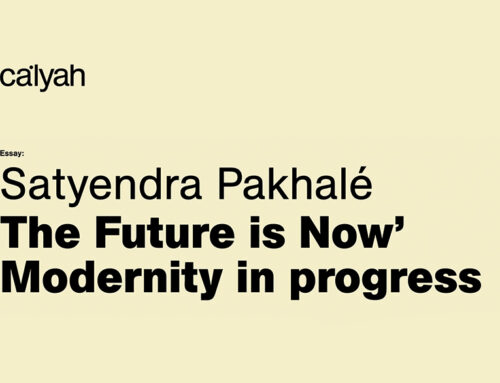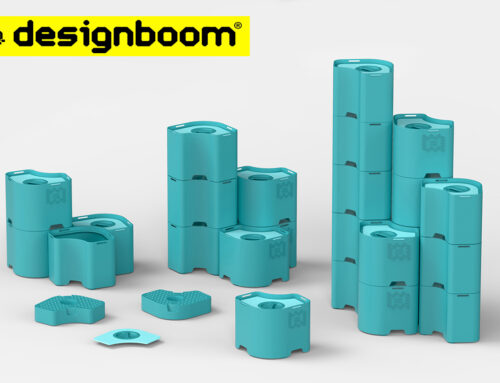What is future? When does it start? Is future going to come? Or is the future already happening?
How can we grasp future? When one reflects on these seemingly obvious questions, it becomes evident that it’s not easy to clearly define when future really starts. For most people it is distant, something vague, something unknown, often something uncertain and therefore the notion of future instigates anxiety in many minds.
Design is fundamentally about future. The new possibility, an alternative reality that is hopefully more human, more sensorial and above all more just. Irrespective of the current myopic vision of many world leaders, the overall human story is the story of optimism. I would like to recall what the prodigious polymath R. Buckminster Fuller said: “The best way to predict future is to design it.” A future that is human and just.
To think of the future we ought to look at the past, especially the previous pandemic, the so-called Spanish flu of 1918-1919. It’s invaluable to understand the condition of the Swedish city of Östersund and, how a century ago, the social inequity in the city meant the flu hit all the harder. The local newspaper Östersunds-Posten swiftly moved from simply reporting on the pandemic to helping organize relief, from publishing pleas for food, clothing and money to offering its offices as storerooms. People of various political convocations and affiliations started cooperating in the city otherwise riven by the class divisions of early industrial society. The Swedish state itself had proven inadequate during the crisis. Responding to its people’s will, just after the pandemic the state made steps towards a cooperative approach to social reform. Subsequently, issues such as housing for the masses and poor nutrition were political agenda, leading to Sweden’s renowned welfare state. It is evident that the date of inception of the welfare policies and the events of autumn 1918 has a direct link. A century later, there are few better places than Östersund to see the results of Sweden’s much praised social model. Today the city and a society which was once unable to feed and educate its population are now one of the world’s fairest and wealthiest.
Similar incidences occurred in the rest of Europe. During the first decades of the 20th century the world was a very different place. There was no comprehensive thinking as regards public healthcare. The living conditions of the masses predisposed them to infections and exposed to the flu. The Pandemic claimed up to 100 million lives of the then global population. Overall, the less well-off population suffered most, but the elites were not spared either. This catastrophe led to the insight that it was not an individual issue but a societal one. The first steps were laid by the Russian vision of the future that the new medicine be holistic covering the biological, psychological and sociological aspects of life. By the1920’s most European governments had embraced the concept of socialized universal healthcare for all and things started to look more like they do today in the continent.
These developments had a curious effect on architecture and design. The basic principles of modern architecture, with its obsession for white colour, large windows, flat roofs, terraces and balconies bringing air and light indoors is a direct response to the pandemic and other diseases associated with the environment such as tuberculosis, a century ago. A century later, the perception of architecture as designed in response to pandemic has become synonymous with modern living around the globe. With the industrial technologies already in place, the modernist architects and designers in the first decades of the last century envisioned new ways of living that have become a norm today. Modern architecture shaped the way we still live in most of the urbanized part of the world.
Unfortunately modernism has been used during the 20th century to support and justify political aims and agendas in vicious ways. Modernism had run its course by the 1970’s as it failed to deliver socially relevant housing possibilities around the world. Once again we are at the cross-roads, a century later. It is evident that the project of modernity is still a work in progress in all societies to greater or lesser extent.
Just like during the previous pandemic that led to a conception of housing that is hygienic, with fresh light and space, now it’s time to create yet another new perspective with a paradigm shift. We need to design possibilities to encourage people to be together, perform life actions with a sense of belonging – ‘conducive to social cohesion’, expanding outside defined boundaries and labels, offering humans a rich landscape of architectural affordances, and gleaning from the most basic human social nature. We ought to explore the role of design in fostering the cohesion, uniting us all in today’s divided world. To further develop the concept of ‘social modernity’ — ‘social’ not in the sense of ‘charitable’, but rather ‘conducive to social cohesion’ as collective welfare and the happiness of our entire ecosystem. The ideal thus referenced is also expressed in the concept of the ‘common good’, meaning whatever is best for all sentient beings and for their harmonious co-existence in the long run.
Design is not the result of society but is indeed the very opposite. Design is the shaper of society, the foundation that allows people to know more about how to live in the world. It is a source of knowledge in itself, yet is hidden. It is the foundation of a way of life – if created with a deep understanding of its meaning. The built environment can at its very finest bring joy. Design is a public art and yet it has almost no public voice. Design fundamentally means to change, to improve, to see new possibilities and to make them real. No change is achievable unless “You [have to] act as if it were possible to radically transform the world. And you have to do it all the time.” as the legendary philosopher Angela Davis reminds us.
As the adversities in the societies have become more evident with the current pandemic, this is an opportunity to try and do something about it. This moment in time could be one of those rare opportunities in the history of humanity for creating, shall we say a ‘movement of positive transformation’. Future is indeed now.
Till now cities and urban spaces have been designed for a separation between living and working but we are likely to return to a preindustrial idea of work and life in a single place or connected space. A different type of city is likely to emerge, where the public space could have different imaginative, recreational as well as work-related purpose. Streets could be reclaimed as public spaces not just for private and public transports but for imaginative public use. Office spaces and complexes are likely to evolve more as community-shared facilities than typical corporate offices. Multifaceted spaces could be envisioned for diverse use from urban farming to personal and community spaces.
New applications of materials and technologies could lead to innovative solutions for natural ventilation, hands-free digital as well as analog technology. There is likely to be affordable housing in city centers. House interiors are likely to change with the integration of a new ‘genkan’ kind of immaculately arranged space, where habitants and visitors remove not only their shoes before stepping into the main dwelling but also acting as a decontamination zone in which to leave bags, clothes, accessories or anything that comes into the house from outside. There are already early signs of all these possibilities in some parts of the world.
History tells us that such developments will not be sustainable unless basic living conditions are provided and are rooted in just and fair opportunities for all. The current global crisis is primarily about human dignity. Unless we take care of all sections of society, particularly the economically and socially marginalized, nobody is really safe. Thinking of design and its contribution to humanity and thinking of the future – affordable housing and raising the hygienic and living conditions of all beings- is a primary necessity once again.
It is worthwhile to recall the acute insight of the renowned author Arundhati Roy, “Historically, pandemics have forced humans to break with the past and imagine their world a new. This one is no different. It is a portal, a gateway between one world and the next. We can choose to walk through it, dragging the carcasses of our prejudice and hatred, our avarice, our data banks and dead ideas, our dead rivers and smoky skies behind us. Or we can walk through lightly, with little luggage, ready to imagine another world. And ready to fight for it.”
Design is not a frivolous supplement to our lives but rather at the root of how we live. It can help envisage a new world and rebuild society.
Living Etc Magazine, India / Anniversary Issue / January 2021
